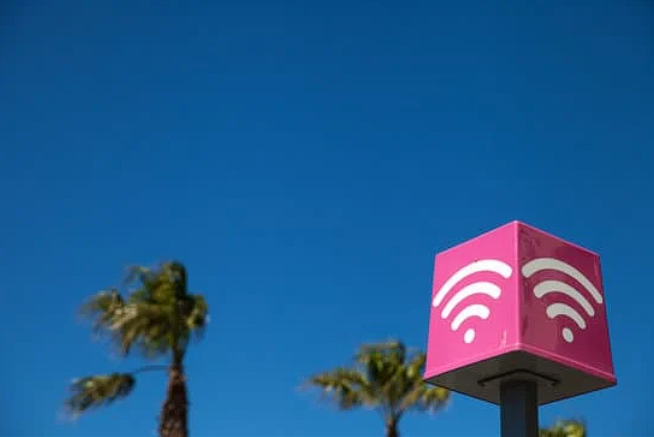Introduction: Why Public Wi-Fi Feels Like a Trap
We’ve all been there—sipping coffee at a café, scrolling through Instagram, or checking emails on airport Wi-Fi. But here’s the kicker: public Wi-Fi can be like leaving your front door wide open. Cybercriminals love it, and your phone becomes their playground if you’re not careful. That’s why knowing how to secure your phone on public Wi-Fi is essential for keeping your data and privacy safe.
Understanding the Risks of Public Wi-Fi
The Illusion of Free Wi-Fi
Public Wi-Fi feels like a gift, but it often comes with strings attached. Hackers lurk in these networks, waiting to exploit vulnerabilities.
How Hackers Target Your Phone
- Man-in-the-middle attacks
- Fake hotspot setups
- Data sniffing tools
Think of it as someone eavesdropping on your phone calls—but silently, and with your passwords.
What’s at Stake?
From your banking logins to private conversations, everything can be exposed. Identity theft, stolen credit card details, and even ransomware could follow.
Signs You’re on an Unsafe Public Network
No Password Protection
If anyone can hop on without credentials, it’s not safe.
Strange Pop-Ups or Redirects
If your phone keeps sending you to odd websites, that’s a red flag.
Slow or Intermittent Connection
Hackers sometimes throttle your connection while they siphon off your data.
How to Secure Your Phone Instantly on Public Wi-Fi
Use a Virtual Private Network (VPN)
A VPN acts like a shield, encrypting your traffic so prying eyes can’t read it.
Enable HTTPS Everywhere
Make sure you only visit websites with “https://”. That extra “s” means security.
Turn Off File Sharing
Sharing is caring—unless you’re on public Wi-Fi. Disable it to avoid accidental exposure.
Keep Bluetooth and AirDrop Off
Hackers can slide in through these doors too.
Phone Settings That Make a Difference
Auto-Connect: Your Worst Enemy
Phones often auto-connect to familiar networks. Disable this to avoid fake hotspots mimicking Starbucks Wi-Fi.
Update Your Operating System
Every update comes with patches that fix loopholes hackers love.
Use Two-Factor Authentication (2FA)
Even if someone grabs your password, 2FA acts as a lock on the lock.
Extra Tools for Hardcore Security
Mobile Security Apps
Apps like Lookout or Norton can spot suspicious behavior before it bites.
Password Managers
Generate and store complex passwords safely, away from prying eyes.
Firewall Apps
Some apps block suspicious connections before they reach your device.
Smart Browsing Habits on Public Wi-Fi
Avoid Banking and Shopping Apps
If you wouldn’t shout your PIN in public, don’t enter it over public Wi-Fi.
Log Out of Accounts When Done
Leaving accounts open gives hackers a longer window to strike.
Use Mobile Data When Possible
Your cellular network is much harder to crack.
When You Absolutely Must Use Public Wi-Fi
Stick to Low-Risk Activities
Reading articles? Fine. Checking bank balances? Not so much.
Double Check the Network Name
Is it “Coffee_Shop_WiFi” or “Coffee_Shop_Free”? Hackers thrive on misspellings.
Enable a VPN Before Connecting
Always connect VPN first—think of it as locking the seatbelt before driving.
The Future of Public Wi-Fi Security
Encrypted Wi-Fi Hotspots
Many businesses are adopting WPA3 encryption, making life harder for hackers.
AI-Based Threat Detection
Future smartphones will use AI to flag sketchy networks in real-time.
5G as a Safer Alternative
With 5G coverage expanding, many users may skip Wi-Fi altogether.
Everyday Analogies to Remember Security
Wi-Fi Without Security = Leaving Your Diary in a Café
Anyone passing by can peek into your private life.
VPN = Sunglasses in Public
You’re harder to recognize, and your movements are less obvious.
Updates = Locks on Your Doors
Every patch strengthens your home’s security.
Checklist: Quick Security Routine Before Using Public Wi-Fi
First, turn off auto-connect.
Next, enable your VPN.
Then, double-check the network name.
After that, stick to non-sensitive browsing.
Finally, log out when you’re done.
Common Myths About Public Wi-Fi Security
“I’m Safe Because I Don’t Use Banking Apps”
Wrong. Hackers still want your social logins, emails, and more.
“Free Wi-Fi Always Comes from the Business”
Not true—anyone can set up a hotspot with the same name.
“VPNs Slow Down Everything”
Modern VPNs are fast and often unnoticeable during normal browsing.
Real Stories of Wi-Fi Hacks
The Coffee Shop Hacker
One traveler logged into fake Wi-Fi at a café—only to find their PayPal drained by evening.
The Airport Trap
Airports are prime hacker zones; fake Wi-Fi networks named “Free_Airport_WiFi” are classic bait.
Long-Term Habits for Ongoing Protection
Invest in a Reputable VPN Subscription
Free VPNs often sell your data, defeating the purpose.
Educate Yourself About New Threats
The cyber world changes fast—stay updated like you would with health trends.
Use Strong Device Security
PIN codes, biometrics, and app locks keep your phone safer if stolen.
Conclusion
Public Wi-Fi is a double-edged sword. It’s convenient, but without the right precautions, it’s like walking into a lion’s den wearing a meat suit. By using VPNs, tweaking your phone settings, and being mindful of your online habits, you can sip that latte or wait for your flight without giving hackers a free pass to your digital life.
FAQ
- Can I use public Wi-Fi without a VPN?
Yes, but it’s risky. Stick to low-risk activities and avoid entering passwords. - Is mobile data always safer than Wi-Fi?
Generally, yes. Cellular networks are encrypted, making them harder to hack. - Do free VPNs protect my phone on public Wi-Fi?
Not always. Many free VPNs log or sell your data. Paid VPNs are more reliable. - What’s the biggest sign I’m on a fake Wi-Fi network?
Strange names, misspellings, or redirects to odd websites are clear warnings. - Should I keep Bluetooth on when using public Wi-Fi?
No, disable it. Hackers can exploit Bluetooth as another entry point.

